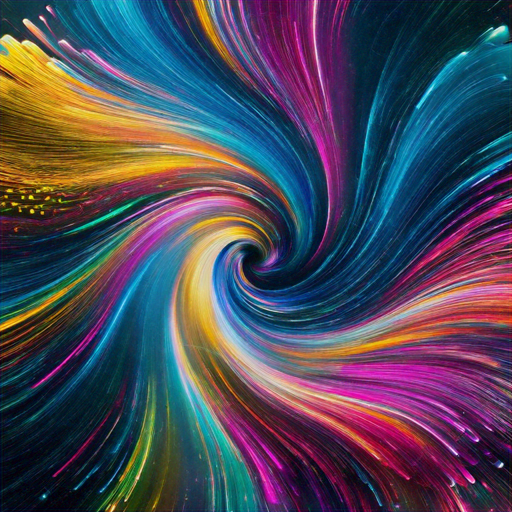Titan-G1: A Powerful AI Image Generator
- 5 minutes read - 1039 words
Table of Contents
In the ever-evolving landscape of AI, image generation tools are rapidly gaining popularity. Among these, Titan-G1 stands out as a powerful and versatile option. This blog post aims to provide a comprehensive analysis of Titan-G1, examining its strengths and weaknesses based on statistical data and expert assessments. By understanding its capabilities and limitations, users can make informed decisions about whether Titan-G1 is the right tool for their specific needs.
Statistical Analysis: A Data-Driven Perspective
- Strengths:
- Affordability: Titan-G1 boasts a significantly higher affordability score compared to the average, making it a cost-effective choice for users on a budget.
- AI Quality: The model scores above average in AI quality, indicating that the generated images are generally of high quality with less noise and entropy, resulting in a more refined and polished output.
- Mood Guidance: Titan-G1 excels in mood guidance, exceeding the average score. This means it effectively captures and conveys the desired mood or atmosphere in the generated images, making it suitable for projects requiring specific emotional tones.
- Prompt Guidance: Titan-G1 demonstrates a strong ability to maintain the initial prompt, scoring above average in prompt guidance. This indicates its reliability in adhering to user instructions and generating images that closely align with the provided prompts.
- Weaknesses:
- Image Quality: Titan-G1’s image quality score is slightly below the average, suggesting that the generated images might lack some sharpness, resolution, or clarity compared to other models. While still acceptable, it might not be ideal for projects requiring high-resolution or detailed images.
- Accuracy: Titan-G1’s accuracy score is below the average, indicating a potential for generating images with more errors or inaccuracies. Users should be aware of this limitation and may need to review and refine the generated images more carefully.
- Realism: Titan-G1’s realism score is slightly below the average, suggesting that the generated images might appear more artificial or less realistic compared to other models. While still acceptable, it might not be the best choice for projects requiring highly realistic or photorealistic images.
Statistical Analysis: Key Takeaways
The statistical data reveals that Titan-G1 is a cost-effective option with high AI quality and strong mood guidance. However, it exhibits minor limitations in image quality, accuracy, and realism. These findings suggest that Titan-G1 is a suitable choice for projects that prioritize affordability, AI quality, and mood control, but users should be aware of its potential limitations in image quality, accuracy, and realism.
Image Examples
A Psychedelic Journey into the Cosmic Vortex
Winding Roads and Endless Vineyards: A Romantic Motorcycle Adventure
Conquering the Waterfall: Rappelling into the Unknown
Laughter Under the Blossoms: A Moment of Pure Joy
Superhero Takes Flight, Lightning in Tow!
Carousel Dreams: A Moment of Joy and Wonder
Lost in the Storm: A Man’s Cry for Help
Friends’ Festive Fun: Laughter and Lights Fill the Street
Cozy Family Gathering by the Fireplace
A Moment of Shared Joy: Grandmother and Granddaughter Connect
Expert Assessment: A Deeper Dive
- Strengths:
- Versatile Image Generation and Editing: Titan Image Generator G1 excels at generating and editing images in various ways, including creating images from text prompts, editing existing images, applying text-based prompts without masks, editing specific parts of images using masks, performing outpainting (extending image boundaries), and inpainting (filling in missing areas). It also supports generating image variations and instant customization options like style transfer using reference images.
- High-Quality Image Output: The model is known for producing realistic and studio-quality images, making it suitable for applications like advertising, e-commerce, and entertainment.
- Advanced Features in v2: Titan Image Generator v2 builds upon the capabilities of v1 by adding features like reference image guidance for image generation, automatic background removal, precise color palette control, and subject consistency for preserving chosen subjects in generated images.
- Built-in Safeguards: To promote responsible AI use, Titan Image Generator includes safeguards like detecting and removing harmful content, rejecting inappropriate user inputs, and filtering outputs. It also adds an invisible watermark to all generated images for copyright protection and content tracking.
- Fine-tuning for Customization: Users can fine-tune the model with their own data to generate images in a specific style or to achieve brand consistency. This allows for personalized image generation and adaptation to unique requirements.
- Weaknesses:
- Limited Language Support: Currently, Titan Image Generator primarily supports English language prompts. This limits its applicability for users working with other languages.
- Data Source Transparency: Amazon has not publicly disclosed the specific data sources used to train Titan Image Generator. This lack of transparency raises concerns about potential copyright issues and the model’s potential biases.
- Watermark Detection Limitations: While the model includes an invisible watermark, the detection feature is currently in preview and only detects watermarks generated from Titan Image Generator G1. It may not be effective for detecting watermarks from other image generators.
Expert Assessment: Key Takeaways
Expert assessments highlight Titan-G1’s versatility in image generation and editing, its ability to produce high-quality images, and its advanced features in v2. However, limited language support, lack of data source transparency, and watermark detection limitations are areas for improvement. These findings suggest that Titan-G1 is a powerful tool for various applications, but its limitations should be considered when choosing it for specific projects.
Conclusion
In conclusion, Titan-G1 emerges as a promising AI image generator with a compelling blend of strengths and weaknesses. Its affordability, high AI quality, and mood guidance make it an attractive option for users seeking cost-effective image generation with a focus on emotional impact. However, its limitations in image quality, accuracy, and realism, along with its limited language support, data source transparency, and watermark detection capabilities, should be carefully considered. Ultimately, the suitability of Titan-G1 depends on the specific requirements of the project and the user’s tolerance for its limitations. As AI technology continues to evolve, we can expect further advancements in image generation tools like Titan-G1, addressing its current limitations and expanding its capabilities.
Sources:
- https://docs.aws.amazon.com/bedrock/latest/userguide/titan-image-models.html
- https://aws.amazon.com/blogs/machine-learning/use-amazon-titan-models-for-image-generation-editing-and-searching/
- https://ground.news/article/amazon-unveils-titan-image-generating-ai-what-you-need-to-know
- https://aws.amazon.com/blogs/machine-learning/fine-tune-your-amazon-titan-image-generator-g1-model-using-amazon-bedrock-model-customization/
- https://neuronad.com/ai-news/tech/amazon-upgrades-its-ai-image-generator-titan-image-generator-v2-enhances-capabilities-for-aws-users/
- https://www.stork.ai/blog/amazon-launches-its-innovative-ai-powered-image-generator
- https://aws.amazon.com/bedrock/titan/
- https://petapixel.com/2023/12/06/amazon-says-its-new-ai-image-generator-wont-hurt-photography/
- https://medium.com/@abebellini/amazons-new-ai-titan-image-generator-9aafa406df3f
- https://docs.aws.amazon.com/bedrock/latest/userguide/titan-multiemb-models.html













